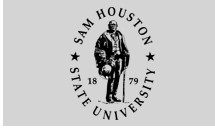Rocky Mountain Researcher Karölis Bagdonas Dead At 63
 |
| Karolis Bagdonas examines a night's collection of moths
at his Northwestern Wyoming Wilderness Research Field Station
in the summer of 2005. |
The Flying Circus has lost its ringmaster.
Karölis Bagdonas, 63, a Sam Houston State University faculty
member who was known internationally for his research on butterflies,
moths and grizzly bears, died Tuesday of a cerebral hemorrhage
at a Conroe hospital.
A memorial service is scheduled for 1 p.m. Saturday at the St. Thomas Catholic
Church in Huntsville.
Bagdonas taught in the biological sciences department at Sam Houston State
beginning in 1990. He earned his bachelor’s, master’s and doctoral
degrees from Colorado State University, receiving the doctorate in 1971.
Born in Boulder, Colo., and growing up in Lafayette, Colo., Bagdonas took his
first job as a visiting scientist in the department of zoology at the University
of Turku, Finland. He discovered there that the Soviet Union had not forgiven
his family for their part in the Russian resistance in Lithuania during World
War II.
He said he survived Russian attempts to kill him twice, once by KGB agents and
another by a Russian destroyer as he and students traveled to a research area
in a small boat. He was asked if the attack by the Russian boat might have been
a mistake.
"They were after me," he said. "They didn’t want me there.
They knew my family."
He returned to the United States in 1973, teaching first at Adelphi University
in New York and returning to the Rocky Mountains in 1977 to teach at the University
of Wyoming. It was there that he developed his reputation for mountain research
and the inspiration of students, and formed what came to be known as the Bagdonas
Flying Circus.
"He would gather a devoted band of fledgling field biologists and travel
through the western mountains on what he calls fifteen-pass circuits," author
Sue Hubbell wrote. "'Let’s do some biology,’ he would exhort,
and in eight days the group would hurtle eight hundred miles, across fifteen
mountain passes, counting butterflies and noting other wildlife matters."
Their entries in professional journals became so frequent, and Bagdonas always
insisted that the students share the credit for their work, that a journal
editor who did not want to list each one each time began crediting the "BFC," and
the Bagdonas Flying Circus became more well known.
He and his students collected data on flowering plants, grasses, birds, fish,
amphibians and insects in the Absaroka and Wind River ranges of Wyoming and
in Colorado. Also, Rocky Mountain goats, the Mexican wood rat, sage grouse,
western flying squirrels, eagles, wolves and ladybugs.
One summer he observed grizzlies turning over rocks, a behavior noted but not
understood by cowboys riding the high country, and other researchers. Some thought
they were after minerals, but Bagdonas determined that they were feeding on the
moths they found under the rocks. Thus began another research tangent.
In 1994 he established the Northwestern Wyoming Wilderness Research Field Station
northwest of Dubois, Wyo. He had great plans for large groups of Sam Houston
State University students to accompany him there for summer studies, a re-creation
of the Flying Circus.
In recent years he was slowed by an infection that severely damaged the bones
in his ankles, after he stepped into a hole and suffered a cut while on a seining
field trip with a group of students near the seawall in Galveston.
As a lepidopterist--specialist in butterflies and moths--he was so highly regarded
in the field that from 1980-1985 he served five terms as president of the Xerces
Society, an international organization dedicated to the preservation of invertebrates.
He explained once why we should be concerned with the preservation of something
as small as a tiny moth. Nature is an interdependent chain, he said. The survival
of a tiny moth could affect the survival of the mighty grizzly.
Scientists continue to discover uses for little-known species, he said. The importance
of a gene pool may not yet be known, not to mention the beauty that could never
be re-created by man.
"If we treasure the things out here--the grizzlies, the butterflies and
moths, the fields of flowers," he said, "then these things need to
be protected."
—END—
SHSU Media Contact: Frank Krystyniak
Oct. 19, 2007
Please send comments, corrections, news tips to Today@Sam.edu.
|


